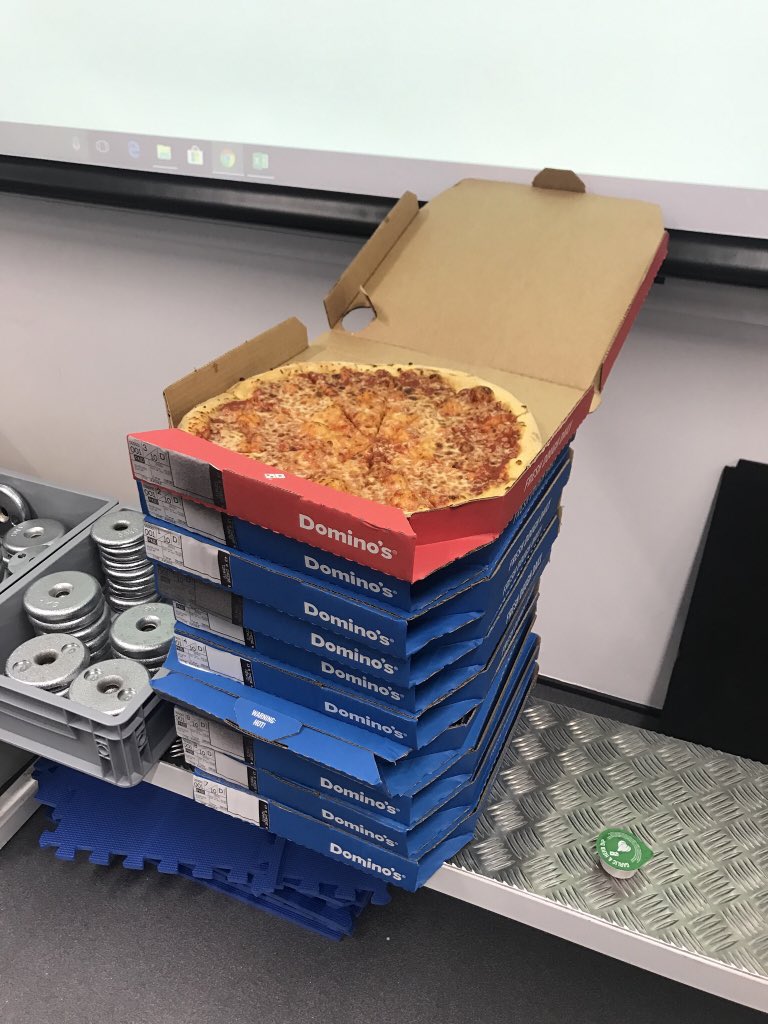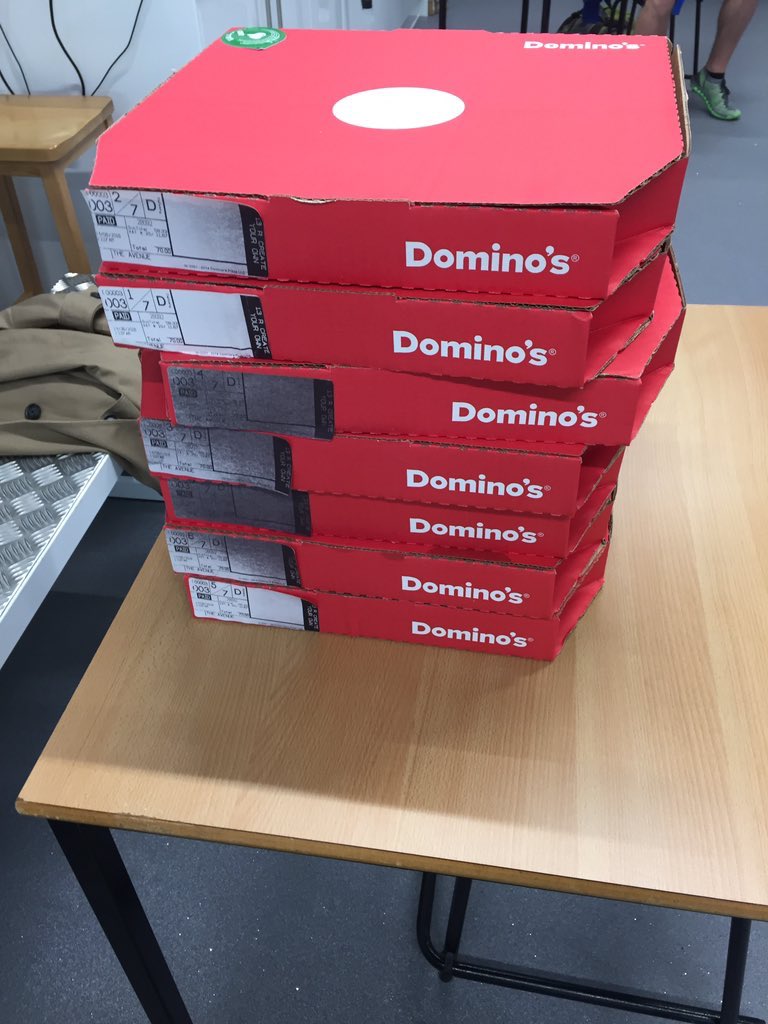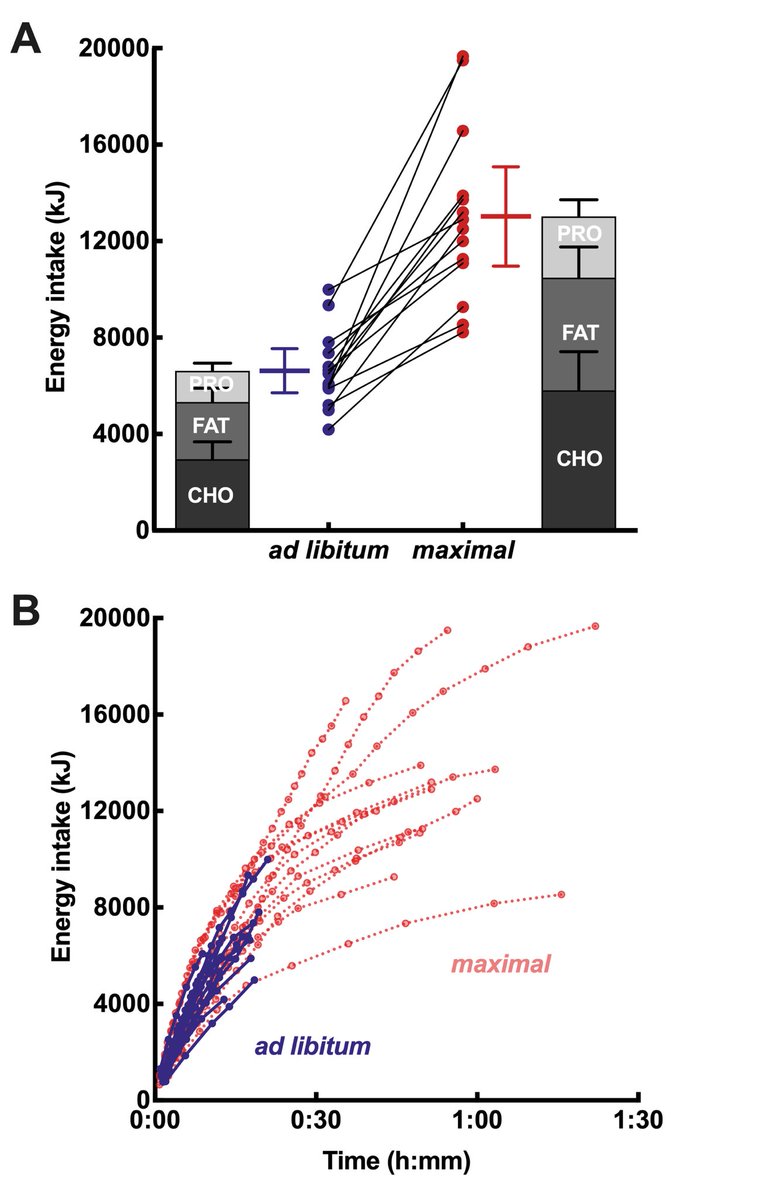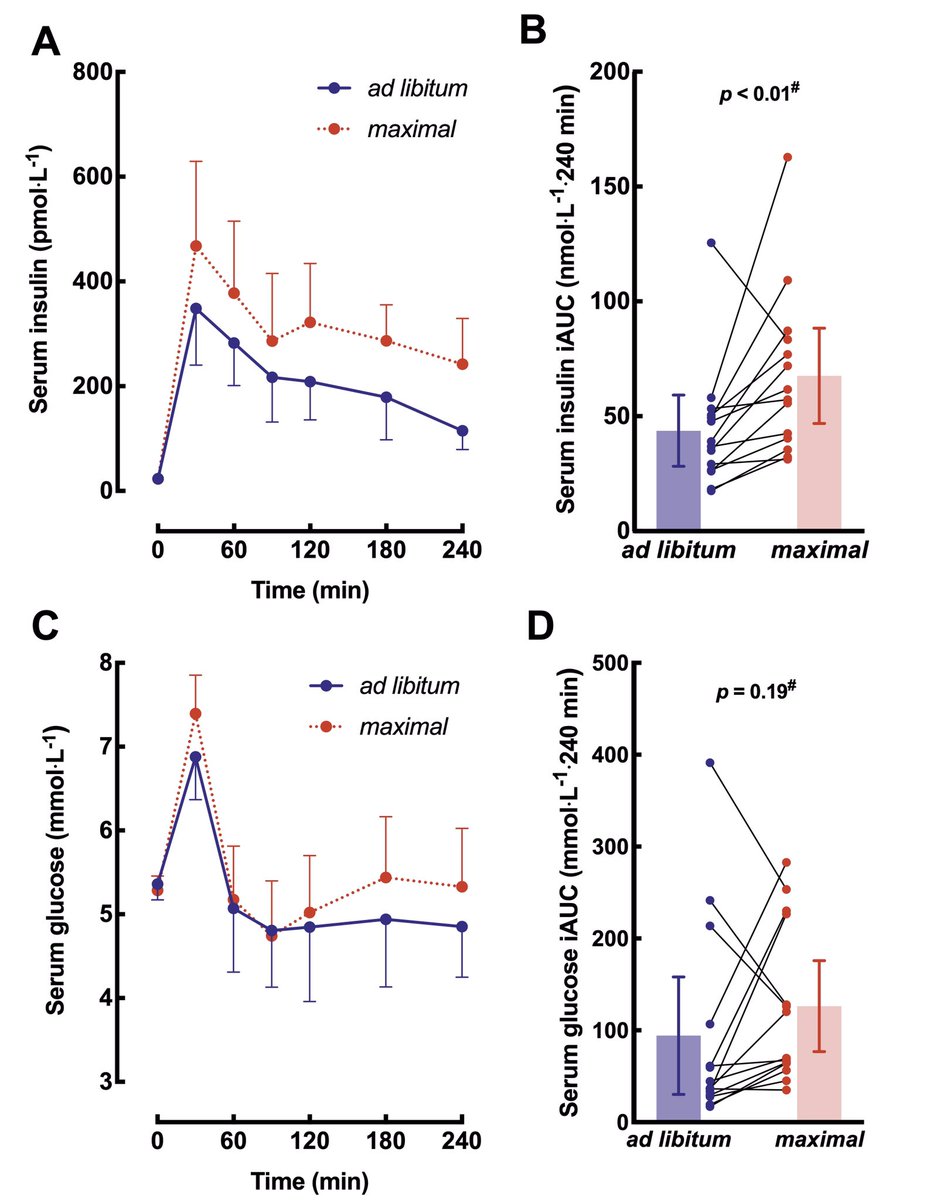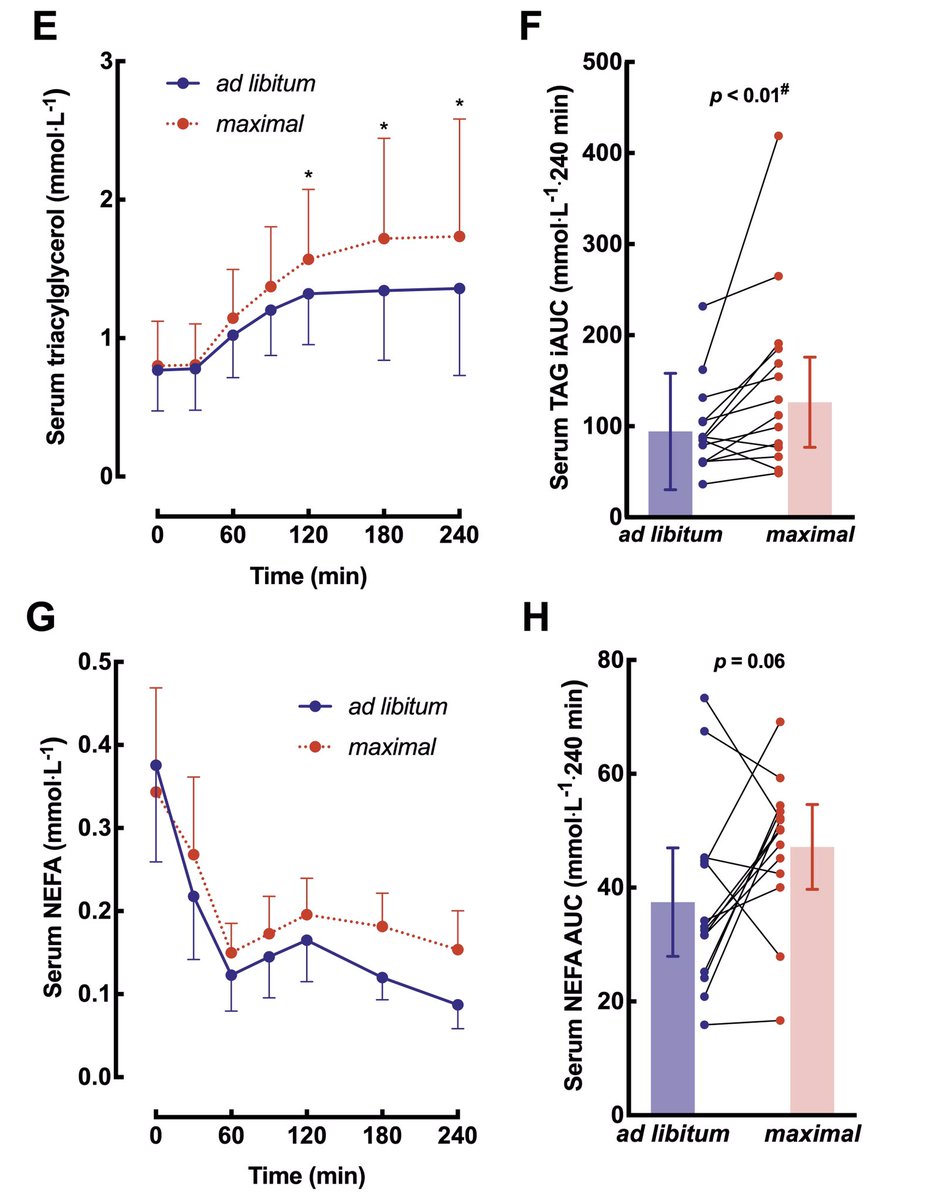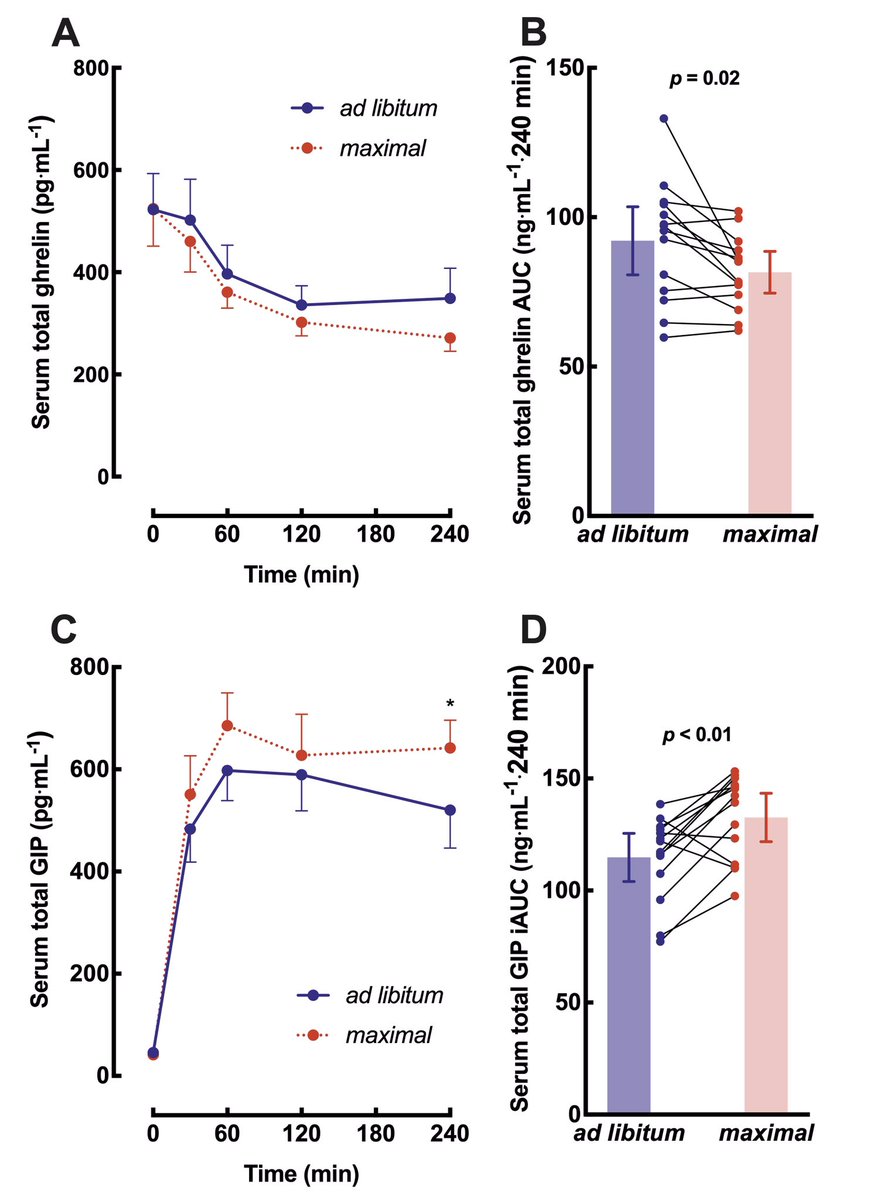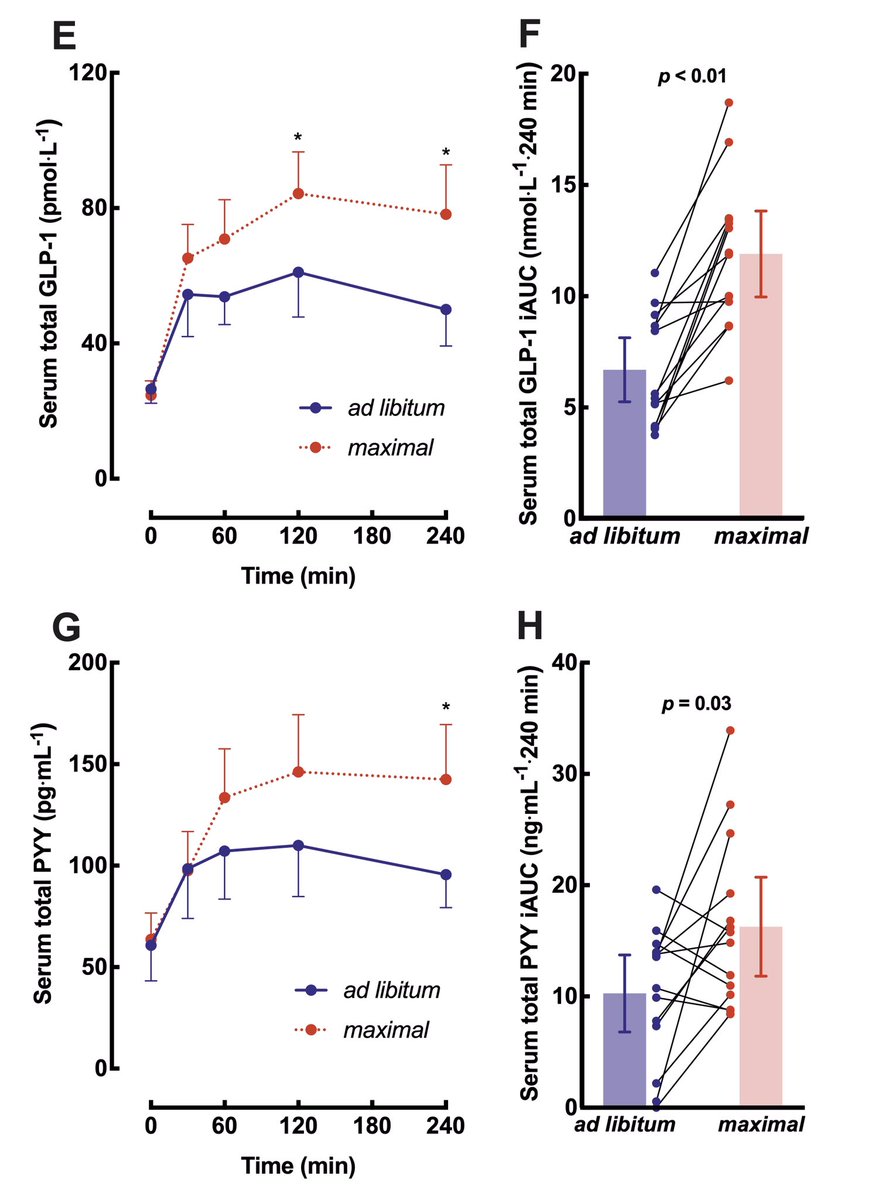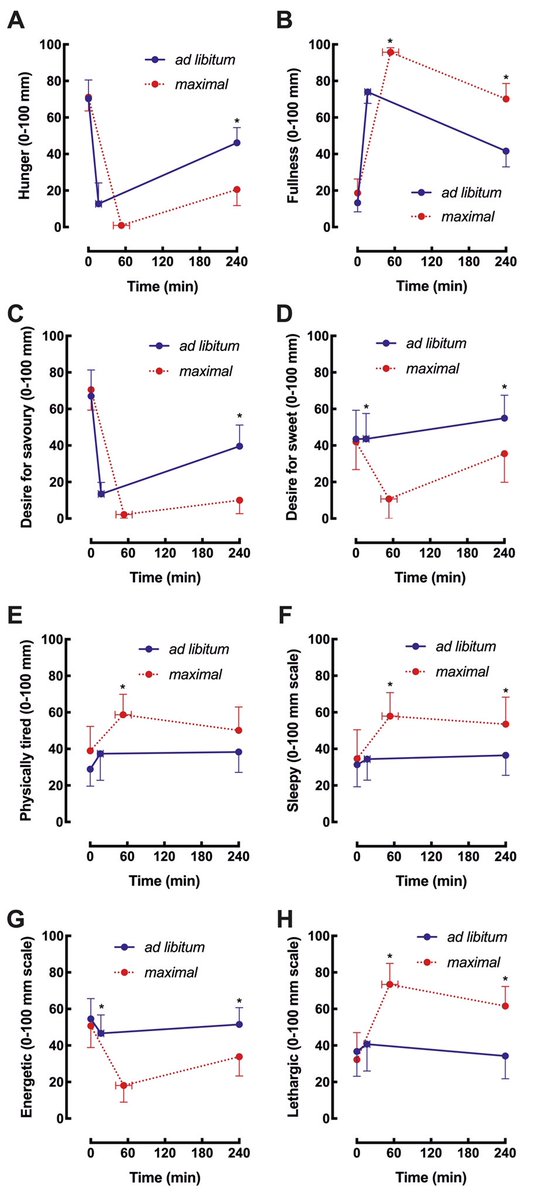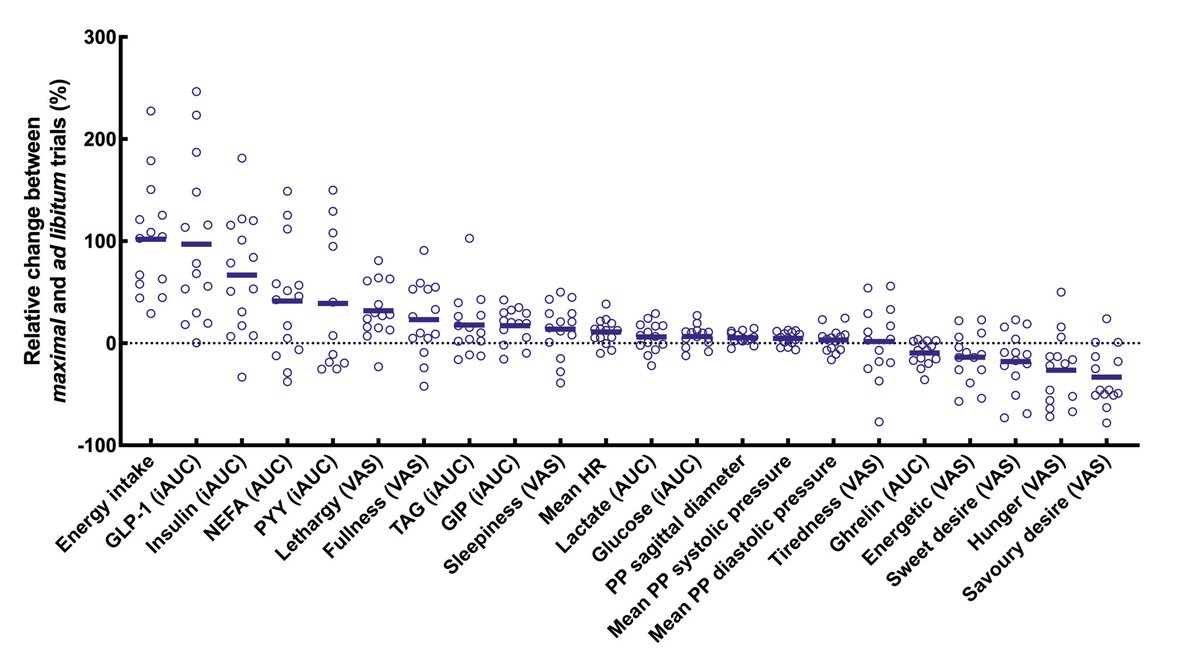During this #COVID19 pandemic we are unable to eat out, but you can still order @dominos
If you have ever wondered what happens to your body when you eat dominos, read on...
Here I present, ‘The physiological responses to maximal eating in men’ https://doi.org/10.1017/S0007114520001270">https://doi.org/10.1017/S...
If you have ever wondered what happens to your body when you eat dominos, read on...
Here I present, ‘The physiological responses to maximal eating in men’ https://doi.org/10.1017/S0007114520001270">https://doi.org/10.1017/S...
We got 14 healthy men to attend the lab on 2 separate occasions in a random order
They were faced with two scenarios:
1. Eat until you are comfortably full (ad libitum)
2. Eat until you cannot eat another bite (maximal)
They were faced with two scenarios:
1. Eat until you are comfortably full (ad libitum)
2. Eat until you cannot eat another bite (maximal)
We needed a highly palatable, energy dense, convenient, and homogenous food
This resulted in ordering obscene amounts of @dominos to the lab
This resulted in ordering obscene amounts of @dominos to the lab
Our first finding is that when participants pushed past comfortably full, they ate twice as many calories
Mean energy intake in the maximal trial was 3113 kcal (roughly 1.5 large pizzas)
Two participants managed to eat roughly 2.5 large pizzas in one go #MondayMotivation
Mean energy intake in the maximal trial was 3113 kcal (roughly 1.5 large pizzas)
Two participants managed to eat roughly 2.5 large pizzas in one go #MondayMotivation
Despite this massive energy load, the body dealt with the surplus calories surprisingly well
Insulin concentrations were elevated throughout the post-meal period, but glucose was more tightly regulated
Insulin concentrations were elevated throughout the post-meal period, but glucose was more tightly regulated
Blood lipids (triglycerides and non-esterified fatty acids) were elevated following this doubling of energy intake*
*but not proportional to a doubling of fat intake
*but not proportional to a doubling of fat intake
We also measured how some of the gut hormones responded to this massive meal
Hormones that are secreted near the proximal end of the GI tract (e.g. ghrelin and GIP) displayed marginally different effects between the meals
Hormones that are secreted near the proximal end of the GI tract (e.g. ghrelin and GIP) displayed marginally different effects between the meals
Whereas hormones that are secreted further along the GI tract (e.g. GLP-1 and PYY) displayed quite substantial differences in response to the higher energy intake
We also measured appetite and mood throughout the trials
To summarise, in the maximal trial:
1. People felt completely full 4h after feeding
2. Desire for sweet food was completely satisfied (but was maintained in ad libitum trial)
3. People felt sleepy and lethargic
To summarise, in the maximal trial:
1. People felt completely full 4h after feeding
2. Desire for sweet food was completely satisfied (but was maintained in ad libitum trial)
3. People felt sleepy and lethargic
Some limitations:
1. We only tested men - this study was open to males and females but no females signed up - we should test females in case there are differences
2. We used a 4h post-meal period, 6-8h may be better for lipid metabolism
3. We used venous (not arterialised) blood
1. We only tested men - this study was open to males and females but no females signed up - we should test females in case there are differences
2. We used a 4h post-meal period, 6-8h may be better for lipid metabolism
3. We used venous (not arterialised) blood
As always, this study leads to more Qs than answers:
-what happens with subsequent meals?
-what happens in unhealthy people?
-what dictates capacity for max food intake (volume, energy, both)?
and many more!
-what happens with subsequent meals?
-what happens in unhealthy people?
-what dictates capacity for max food intake (volume, energy, both)?
and many more!
In conclusion, healthy humans can eat twice as much as ‘full’ and they deal with this huge initial energy surplus remarkably well
This final fig compares the response to the maximal feed vs ad libitum, you can see that vital physiological functions are extremely well-preserved
This final fig compares the response to the maximal feed vs ad libitum, you can see that vital physiological functions are extremely well-preserved
Finally, thanks to the participants who were willingly stuffed with pizza
And thanks to the amazing team that made this study possible:
@R_Edinburgh93
@R_G_Davies
@jp_walhin
@JariyaBuniam
@LJJ_nutrition
Prof Peter Rogers
@Gonzalez_JT
@DrBSteamjets
And thanks to the amazing team that made this study possible:
@R_Edinburgh93
@R_G_Davies
@jp_walhin
@JariyaBuniam
@LJJ_nutrition
Prof Peter Rogers
@Gonzalez_JT
@DrBSteamjets

 Read on Twitter
Read on Twitter